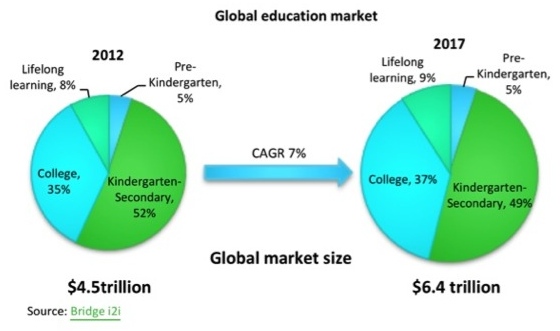Why pay full price for something when you can rent it cheaper from a stranger online? That is what an increasingly number of people are thinking today. Some share for
ContinueChristel K. Stoklund
Christel K. Stoklund is our Head of Research and a market research professional. She will share with you new and exiting insights from Global Trends research. Previously Christel has held a senior position with The Nielsen Company, as well as consulting and teaching positions. She holds a Masters degree in Strategy and Organization from The Aarhus School of Business in Denmark. Christel is currently located in the U.S.

July/August 2014: Consumers are living and breathing technology and there is no sign of it slowing down. Today’s world is so digitally connected and full of information that choices can sometimes be overwhelming and opaque. However, more choice, along with information means greater power and freedom to influence your life and environment. Consumers have never been savvier, more demanding, value conscious, and connected. But bear in mind that while today’s consumers are almost always connected, future consumers will most likely be always connected as technologies become wearable and even implanted in the body.
Channels to market are also undergoing fundamental shifts as technologies drive new routes to market (both physical and digital) as well as new purchase behaviors, from “view in store, buy online” to self-scan check-outs, and mobile payment systems that could replace the cash register completely. Smart devices are radically changing the purchase process, and ultimately mean fewer shoppers in store. In this environment, businesses and channel intermediaries face an increasing threat of losing direct relationships with the consumer or customer. The challenge: how to be where your customers are and deliver value that is relevant to them where and when they want it.
In this briefing we take a journey into the minds of 21st century consumers to see what is important for them, as well as to see what changes are necessary in the business environment to respond to the fundamental changes taking place in the world’s consumption behaviors. Business as usual is simply not option.
NEW: Also see our slideshow presentation of The 21st Century Consumer: What Matters?
Continue3.2% of the world’s population is migrants; putting them all together in one country would create the world’s fifth most populous country with 232 million people. Europe and Asia combined
ContinueManufacturing of goods is one of the biggest sectors of the global economy and with the size of the global middle class expected to increase to 4.9 billion by 2030
ContinueNEW: Also see the slideshow presentation of Preparing for a new generation of learners and workers ![]()
May 2014: Education is a basic need. Economic and social development depends on it; the ability for individuals to reach their full potential depends on it; business success depends on it. However while governments, businesses, non-governmental and other private institutions play a tremendous role in educating our current and future workforce, educational institutions remain the cornerstone of knowledge and innovation.

Globally education systems aim to prepare young (and not so young) people to be successful and productive members of society, providing people with the appropriate knowledge and skills to enable them to do well in life and to support societal progress. Yet there is increasing criticism of many education systems and institutions across the globe, as youth unemployment reaches critical levels in many countries and businesses protest that the next generations entering the workforce do not have the right skills. In fact, some leaders suggest that whole swathes of young people are unemployable because education systems around the world fail to invest in up-to-date education and their students.
The new generation of learners is adigital generation thriving on flexibility, mobility and immediacy. Their digital attitudes and behaviors are permeating every facet of life and work, embracing the virtual, living in real time. They are coexisting with, if not thriving on, social networking, the cloud, and cyberspace demands that are often seen as overwhelming and beyond the "normal" human capacities of many in older generations. The mindset of younger generations is challenging our society’s conventional and stationary learning patterns meaning that the education system needs to focus on new, more flexible and mobile ways of learning to motivate and engage these new learners.
The good news is that disruptive forces are already changing the landscape of education as traditional face-to-face learning moves towards virtual and interactive learning, However, educational institutions – whether primary, secondary or tertiary – need to step out of their comfort zones to reflect an increasingly complex world. Constantly developing technology, the mindsets of the new digital natives and future skills challenges demand radical shifts both in educational content and delivery.
So what will it take to reshape the education “industry” and prepare our educational systems and institutions for the future – in fact, who should the educators be?
ContinueIn recent years the possibilities of the Arctic have hit the news now and again. Mostly it goes unnoticed. For many people the Arctic is still just a big chunk
ContinueToday there is a growing expectation and need for businesses of all shapes and sizes to step up to a bigger role in society. An increasing number of businesses are
ContinueJanuary 2014: In our briefings on the 10 trends to watch in 2014 (and beyond) we started out by saying: When Moore’s Law was published, its model of exponential rates of change seemed unbelievable. Today it still guides the semiconductor sector. The accelerating global pace of change today is analogous to Moore’s law. Since the turn of the century, emerging markets have moved center stage, the digital revolution has arrived, social networks have become ubiquitous, a sharing economy has been born, scientific advances such as mapping the human genome have changed our lives, and the voice of the people has reinvented markets and overturned governments.
Looking ahead to the next year, and even further, the biggest challenge for leaders, however, is not accurately predicting the future. Rather it is about first having a broad and open understanding of the trends reshaping the world, second an informed point of view on the future and what it means for your organization and third, and most importantly, taking actions today to begin to prepare. In a world of accelerating change, the biggest risk for leaders is not being wrong in their point of view about the future, but beginning to take action too late.
To help you open up to the tremendous opportunities and challenges ahead, here’s our annual round-up of where you can find some of the more interesting and important trend forecasts and ideas for 2014. As always, treat them as directional and informed opinions that can supplement your own thinking on what might be possible, feasible and desirable – not accurate predictions. No surprises in that there are plenty of opinions on economic growth as the world emerges slowly from the slump of the last few years, and that technology (social, mobile, science and more) will continue to radically reshape what we do and how we do it, from retailing to manufacturing. In focus too is a growing tide of concern and opinions around privacy and security as our lives and work become more dependent on the digital world and the rise of the internet of things and big data add to the complex web of platforms and networks we use.
Look out for more on many of these trends in our 2014 GT briefings along with examples of how they are being – or could be – translated into action.
ContinueDecember 2013: Last month, we started our coverage of the 10 Trends to Watch for 2014 by introducing the notion of a “Moore’s Law of Change.” In a world of accelerating and radical changes there will continue to be significant opportunities and challenges for leaders, organizations and individuals that approach change with an open mind, an informed point of view and a readiness to take action today to prepare for the future.
So where should leaders look today for these changes? In our forthcoming Global Trends Report 2014, The Fieldbook, we highlight 10 trends that business leaders need to focus on today. In this December 2013 briefing we highlight trends 6 to 10, but before we head into the examples, let’s briefly take a look back at trends 1 to 5 from the November briefing (click here to read it):
ContinueNovember 2013: When Moore’s Law was published, its model of exponential rates of change seemed unbelievable. Today it still guides the semiconductor sector. The accelerating global pace of change today is analogous to Moore’s law. Since the turn of the century, emerging markets have moved center stage, the digital revolution has arrived, social networks have become ubiquitous, a sharing economy has been born, scientific advances such as mapping the human genome have changed our lives, and the voice of the people has reinvented markets and overturned governments.
For organizations and individuals the opportunities and challenges that a Moore’s Law of change offers are vast. Look for continued radical changes in retail and social networks and value chains being reconfigured as connectivity and technology redistribute industry. “Hubonomics” will shift how and where we operate and consume. The latest scientific advances will make the impossible, possible. Perhaps the biggest issue looking forward will be to understand and manage the contradictions these changes entail.
The challenge for leaders, however, is not accurately predicting the future. Rather it is about first having a broad and open understanding of the trends reshaping the world, second an informed point of view on the future and what it means for your organization and third, and most importantly, taking actions today to begin to prepare. Leaders who continue to act as if the old rules apply will find their organizations left behind, as Kodak and Nokia demonstrate. How long does to take to build new capabilities or business models? To change mindsets about consumers and building relationships with them? To change organizational culture? In a world of accelerating change, the biggest risk for leaders is not being wrong in their point of view about the future, but beginning to take action too late.
So where should leaders look today? In our forthcoming Global Trends Report 2014, The Fieldbook, we highlight 10 trends that business leaders need to focus on today. These will be the subject of our next two briefings. In this briefing we focus on the first five trends and December’s will focus on the next five trends to watch.
Continue


